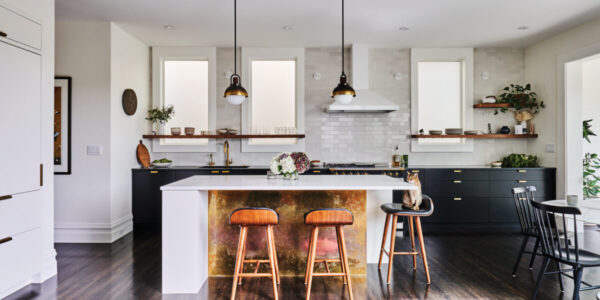
This Family of Four Lives in a 16-Foot-Wide House—Here’s How They Do It
A tiny home without an inch to spare delivers big results.
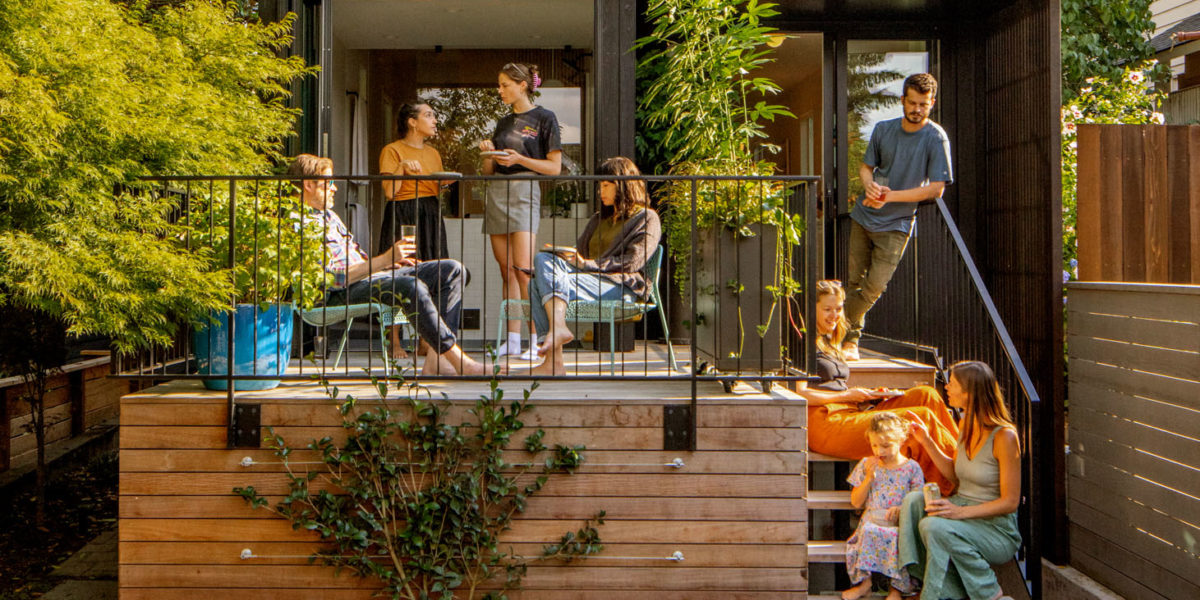
Rafael Soldi
When a family of four outgrew their adorable but tiny home in Phinney Ridge, Seattle, they knew they needed more space. The problem was that they loved their historical 1907 house, and they didn’t want to leave their neighborhood, which is close to picturesque Green Lake. To stave off a move, they turned to Kip Katich of Best Practice Architecture in Washington, who did so much to make the house more livable—while only adding 30 square feet to the home’s footprint—that it feels like a magic trick.
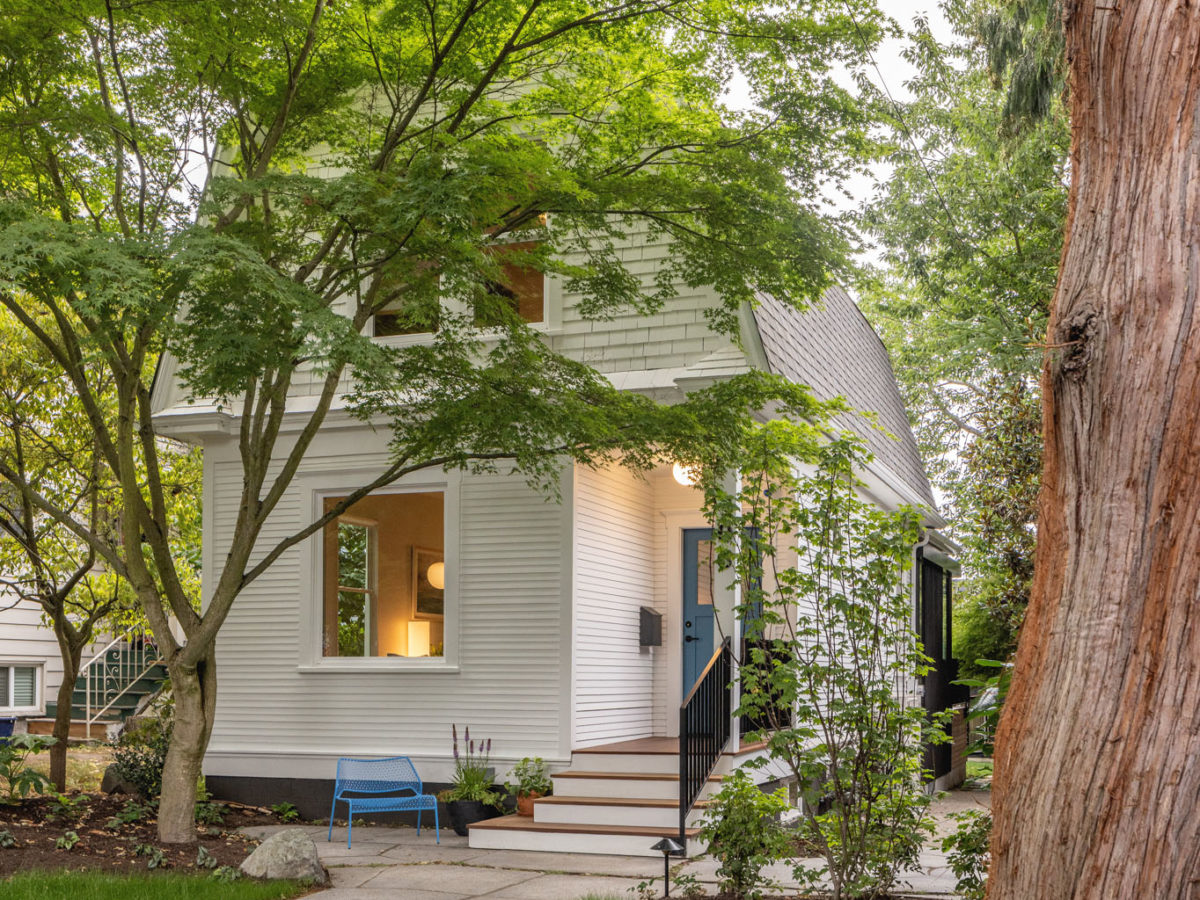
Rafael Soldi
“They didn’t want to leave just because of the shortcomings of the inside,” Katich says. “Instead, they wanted to increase access and connection to the landscape, and create more storage and exterior living space.” And although the house, which Katich calls the “Phinney Mini,” is on a compact lot that’s only 25 feet wide, he could see that with some creative thinking, he could maximize the space.
He started with a gut renovation of the first floor and the basement. As with many older homes, the kitchen, dining, and living rooms were too compartmentalized, so Katich removed interior walls to help with the home’s flow and to bring in natural light. One major move was counterintuitive: Since there’s only one bathroom in the Phinney Mini, he made the kitchen smaller and the bathroom bigger and more luxurious.

Rafael Soldi
Of course, it sounds like heresy to make a kitchen in a small home smaller, but Katich pulled it off by adding more practical storage and integrating the refrigerator and dishwasher with the white oak cabinetry by the contractor, Kable Design Build.

The Low-Water Gardening Guide
If you've been looking for new ways to save water in your garden, or want to redo it entirely, let this be the year you make it happen. Our 8-week newsletter series can show you how. Click the button below to subscribe!
Meanwhile, the clients had an excellent idea for the now larger bathroom. “The husband grew up in Japan and loved Japanese bathing,” Katich says. “He wanted to include that in his family’s culture while integrating the tub with the outdoor space via a large window.”
But Katich realized he could take that impulse one step further and really open it up. Now, glass doors open from the soaking tub to the patio, which has made the space multi-functional. “When it gets really hot on a summer day, the tub acts as a cool little dip for the kids,” he says, “and the adults sit on the back porch and stick their toes in, so it becomes another gathering place.”
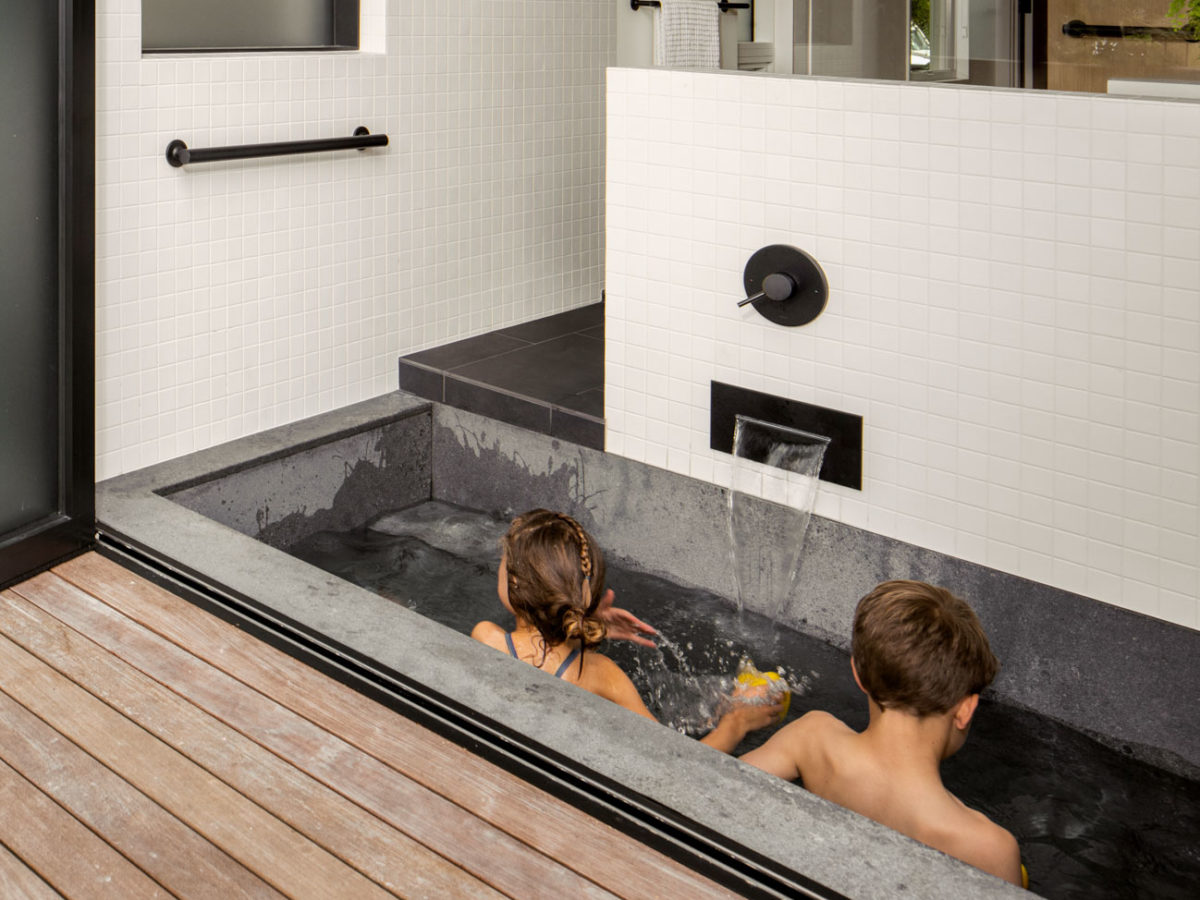
Rafael Soldi
More great ideas turned the basement into a playroom/den/guest room. The challenge with a space like this was how to turn a dark afterthought into a room you’d actually want to hang out in. Katich replaced one wall with a sliding glass door to add access to the yard and bring in natural light. Shelves hold kids’ books for reading time, while the bulletin board hides a Murphy bed that can be opened when the family has guests.
One issue was where to put an office since, like a lot of people nowadays, the clients were working from home. “I asked myself, ‘How do you have a space that’s productive and a delightful space to work in, but doesn’t interfere with your day-to-day life?’” says Katich.
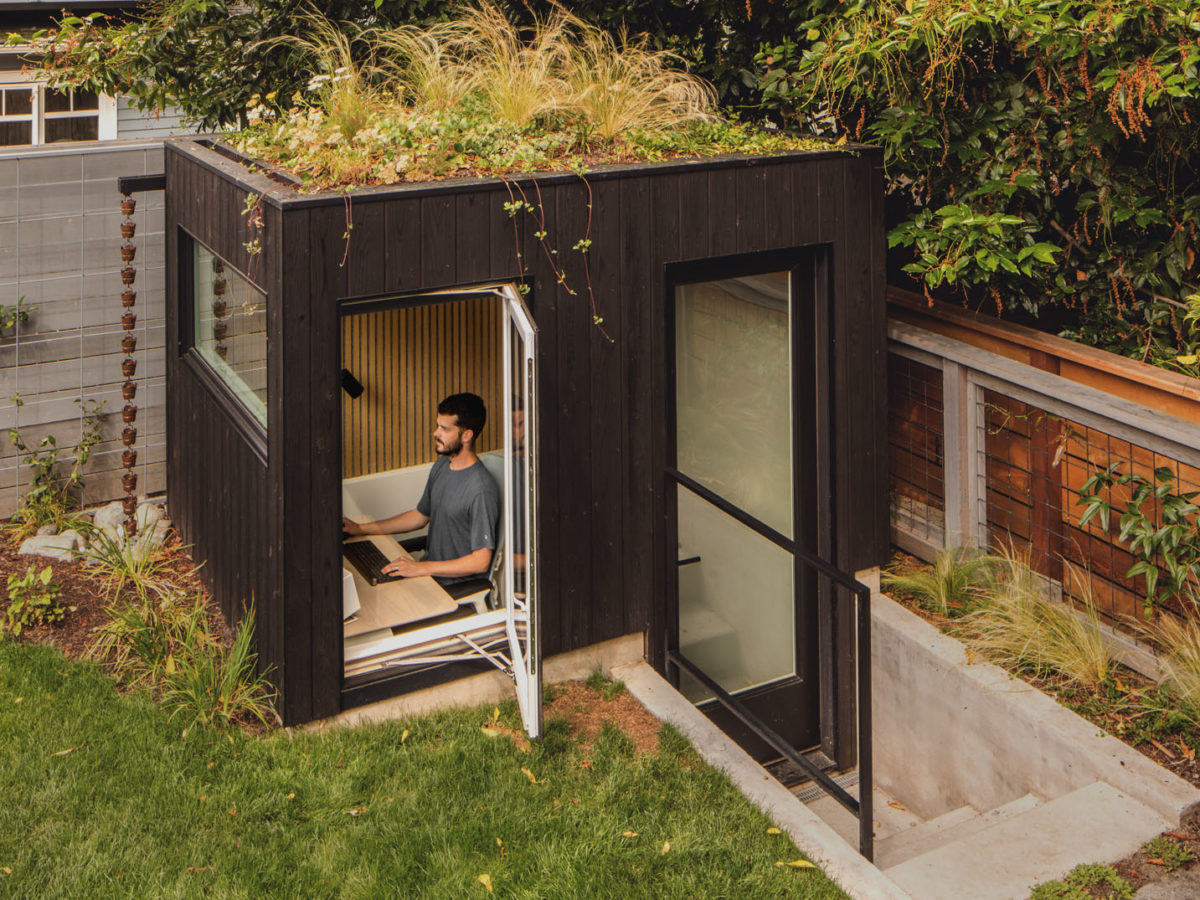
Rafael Soldi
The answer was a modest cube that integrates into the backyard landscape. Interestingly, it was the client’s idea to sink the cube three feet down into the earth and add a green roof. “They didn’t want to look down from the bedrooms onto a box,” he says. “And they didn’t want it to be too large because they wanted to be sensitive to their neighbors.”
Katich also helped the family pick out furniture that would fit the home’s small scale. Narrow spaces are especially challenging because something like the wrong dining room table can make it hard to walk from one room to another. To visualize sizing, he put masking tape down to make sure the oak table by Another Country wouldn’t be too large. The matching bench comes with an added benefit: When you’re not using the dining area, it can be pushed under the table to open up the walkway.
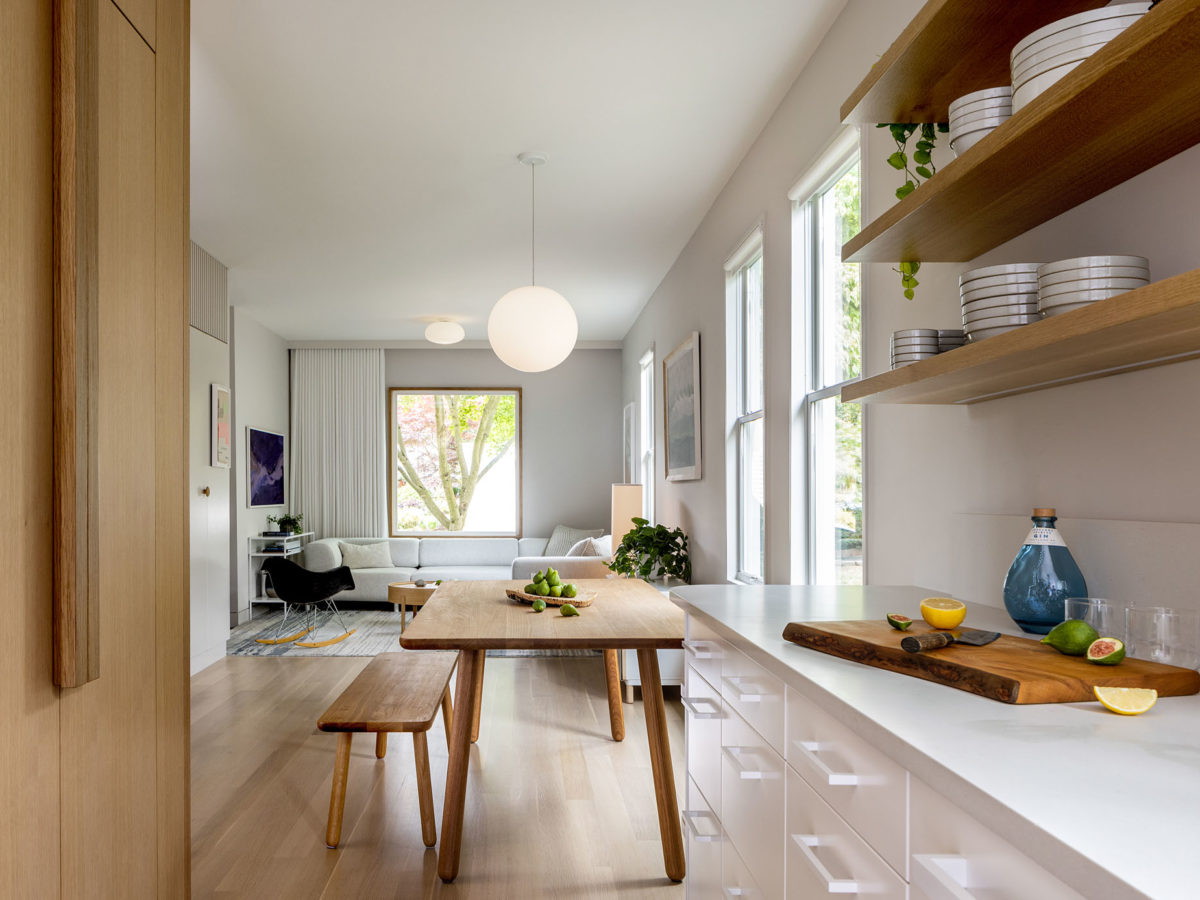
Rafael Soldi
A white pendant light from Design House Stockholm hovers, while in the living room, they managed to add a large Hem sectional by placing it against the window wall. “This way the couch is open to the room, so if you’re entertaining you can have someone on the couch, someone in the dining room, and someone in the kitchen, and the whole thing feels like a gathering space,” he says.
The result of all these innovative ideas? The family has decided to stay in the neighborhood and home they love. “Everything turned out beyond our expectations,” Katich says. “And the house feels open and effortless.”
Read the Current Issue Here!
Get one year of Sunset—and all kinds of bonuses—for just $29.95. Subscribe now!
